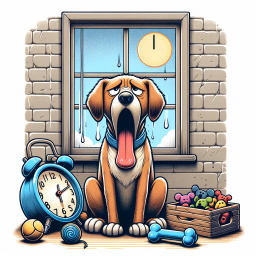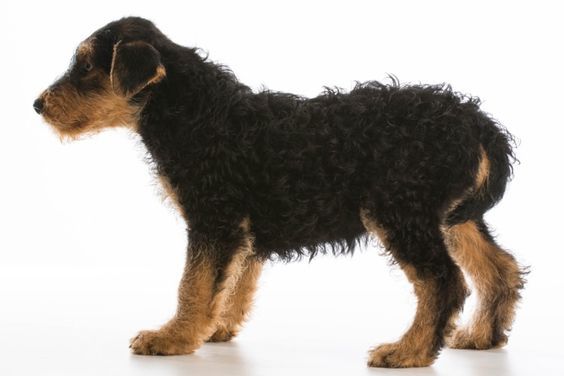7 Signs Your Dog is Bored

Signs Your Dog is Bored? To know the 7 signs read our full article.
In the dynamic world of pet ownership, understanding the nuances of our furry friends’ behavior is key to ensuring their happiness and well-being.
One common yet often overlooked issue is dog boredom. It’s a state that can lead to a variety of behavioral problems, but with the right knowledge and approach, it can be effectively managed.
This article delves into the signs of a bored dog and provides practical solutions to keep our canine companions engaged and content.
7 Signs Your Dog is Bored

Bored Dog body language
Boredom in dogs manifests in various ways, and recognizing these signs is the first step in addressing the issue:
- Destructive Chewing and Digging: A classic sign of boredom is when your dog starts to chew on furniture or dig up the garden. These behaviors are often a dog’s way of finding entertainment and mental stimulation.
- Excessive Vocalization: If your normally quiet dog begins to bark or howl excessively, it could be a cry for attention or an expression of boredom.
- Restlessness and Pacing: Just like humans, a bored dog may exhibit signs of restlessness, such as pacing around the house or having trouble settling down.
- Self-Grooming: Over-grooming or licking can also be a symptom of boredom, sometimes leading to skin issues if it becomes obsessive.
- Disinterest in Activities: A sudden lack of interest in activities they usually enjoy can be another telltale sign of boredom.
- Jumping Up or Over-Excitement: When a dog doesn’t get enough exercise or mental stimulation, they may exhibit over-excitement or jumping behavior, especially when the owner pays attention to them or returns home.
- Withdrawal: In some cases, a bored dog might become withdrawn or appear depressed. This can include a lack of interest in interacting with people or other pets.
The Impact of Boredom on Dogs
Boredom is not just an inconvenience; it can have significant impacts on a dog’s overall well-being. It can lead to frustration, stress, and even depression in dogs. Additionally, the behavioral issues stemming from boredom can strain the human-dog relationship, leading to a less harmonious household.
Combating Canine Boredom
Alleviating boredom is crucial for maintaining a healthy, happy pet. Here are some effective strategies:
- Regular Exercise: Adequate physical activity is essential. This includes walks, runs, and playtime tailored to your dog’s breed, age, and physical condition.
- Mental Stimulation: Keep their minds active with puzzle toys, training sessions, and games that challenge their problem-solving skills.
- Social Interaction: Dogs are social creatures. Interaction with other dogs or humans can greatly enrich their lives.
- Creating a Stimulating Environment: An environment with various stimuli, like dog boredom toys, safe outdoor spaces, and even auditory or visual stimuli like music or dog-friendly TV, can be beneficial.
- Routine and Consistency: Establishing a routine can help dogs feel secure and reduce boredom-related anxiety.
Is my dog bored or depressed?
Differentiating between a bored and depressed dog can be a helpful tool for dog owners to better understand their pet’s emotional state.
Below is a sample table to help you recognize some common signs of a bored versus a depressed dog:
| Behavior/Sign | Bored Dog | Depressed Dog |
|---|---|---|
| Activity Level | Restless, pacing, or hyperactive | Lethargic, low energy |
| Appetite | Normal or increased | Decreased or loss of appetite |
| Playfulness | Attempts to engage in play or seek attention | Rarely initiates play, avoids interaction |
| Tail Position | Usually held high or wagging | Often held low or tucked |
| Body Language | May exhibit destructive behavior (chewing, digging) out of boredom | Minimal movement, limited interest in surroundings |
| Vocalization | May bark or whine to seek attention | Quiet, minimal vocalization |
| Interest in Toys | Engages with toys and objects | Shows little to no interest in toys |
| Social Interaction | May seek interaction with humans or other pets | Withdraws from social interactions |
| Grooming | Normal self-grooming behavior | May neglect self-grooming |
| Sleeping | May have trouble settling down or frequent napping | Excessive sleeping or difficulty staying awake |
| Anxiety | May display signs of restlessness or anxiety due to boredom | May show signs of anxiety or indifference |
Interactive dog toys for boredom
Interactive dog toys are a fantastic way to keep your furry friend mentally and physically stimulated while combating boredom. These toys engage your dog’s natural instincts, encourage problem-solving, and provide entertainment. Here are some examples of interactive dog toys for boredom:
- Kong Classic Toy: The Kong is a classic interactive toy that can be filled with treats or peanut butter. Dogs have to work to get the treats out, keeping them engaged for an extended period.
- Puzzle Toys: Puzzle toys come in various forms, from treat-dispensing balls to intricate maze puzzles. Brands like Outward Hound and Nina Ottosson offer a range of options to challenge your dog’s problem-solving skills.
- Benebone Wishbone: This toy is designed for heavy chewers and has a unique shape that makes it easy for dogs to hold. It’s flavored with real bacon, which makes it more appealing to your pup.
- Tug-A-Jug: This toy dispenses treats as your dog plays with it. The dog has to figure out how to manipulate the toy to get the treats out, providing both mental and physical stimulation.
- Busy Buddy Twist ‘n Treat: This toy is adjustable, allowing you to control the difficulty level. You can fill it with kibble or treats, and your dog has to work to get them out by rolling the toy.
- iFetch Automatic Ball Launcher: If your dog loves fetching, the iFetch can keep them entertained for hours. It automatically launches tennis balls, so your dog can chase and fetch them.
- Hide-A-Squirrel Plush Toy: This toy features a plush tree trunk and squeaky stuffed squirrels that your dog can “hunt” and pull out of the trunk. It taps into their natural hunting instincts.
- Trixie Gambling Tower: This tower requires your dog to slide, flip, and lift compartments to access treats. It’s a mentally stimulating game that can keep your dog engaged.
- Snuffle Mat: A snuffle mat is a soft mat with fabric strips that hide treats or kibble. Your dog uses their nose to find the hidden treats, which provides mental stimulation.
- Smart Dog Toys: Some modern interactive toys, like the Furbo Dog Camera or Petcube Bites, not only dispense treats but also allow you to interact with your dog remotely through a camera and microphone. You can dispense treats, talk to your dog, and even play laser games with them.
Remember that the suitability of these toys depends on your dog’s size, age, and preferences. Always supervise your dog when introducing a new interactive toy and choose toys that are appropriate for their level of play and chewing strength. Interactive toys can be a great way to alleviate boredom, provide mental stimulation, and strengthen the bond between you and your furry companion.
I hope you have known the 7 Signs why Your Dog is Bored.
Related Posts:
Read More: Why Does My Dog Open His Mouth When I Pet Him? 7 Reasons
Read More: Why Does My Dog Keep Sniffing My Legs: 5 Common Reasons
Read More: Why Does My Dog Bite Me In The Morning? 2 Way To safe From
Read More: Why Are My Dogs Balls Black? Best Number 1 Answer
Read More: Why Do Dogs Like Peanut Butter?
Read More: Why Does My Dog Nibble My Ear? 10 Reasons
Read More: Why Does My Dog Move Its Bed Around?
Read More: Why Does My Dog Bring Me His Food?
Read More: Why Does My Dog Lay His Head Over My Neck? 7 Reasons
Read More: 14 Famous Dogs In History





